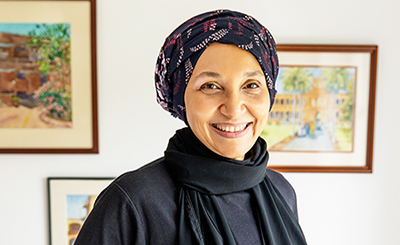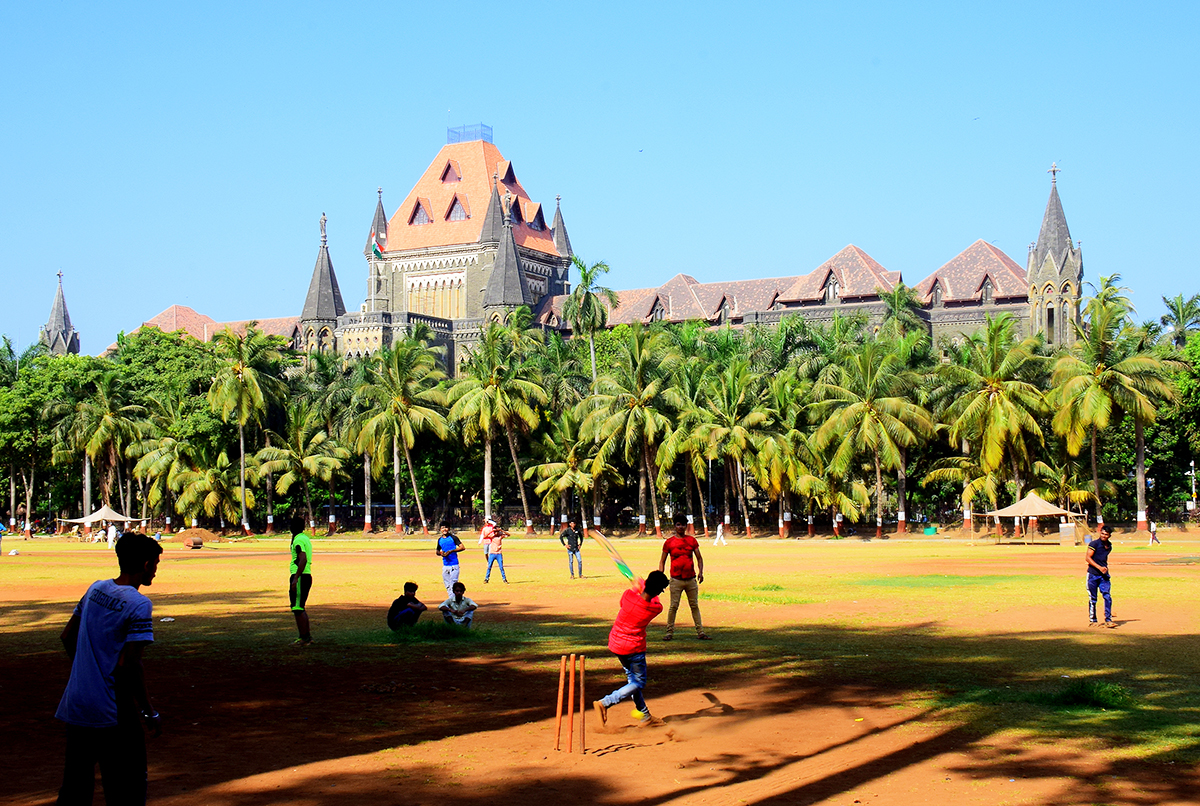
Bombay High Court with the Oval Maidan in the foreground. It separates two architectural styles that are a century apart, with 19th century Victorian Gothic buildings lining one side and the Art Deco buildings of the 20th century on the other side. Photo courtesy: Art Deco Mumbai Trust
April 18 is celebrated as UNESCO International Day of Monuments and Sites, or World Heritage Day. For many Mumbaikars, it’s a time to savour a 14-year-long hard-fought battle that gave the city its third World Heritage Site inscription in 2018 for its Victorian Gothic and Art Deco ensemble
“It is a city, which by God’s assistance is intended to be built.”
— Gerald Aungier, second Governor General of Bombay (1672-75)
The far-sighted Englishman saw the worth of these seven islands that had been handed over by the Portuguese — who had occupied Bombay from the 16th century — to the British as part of the dowry when Catherine of Braganza wed Charles II of England in 1661. Despite being a sleepy cluster of marshy isles dotted with palm trees, rice fields and fishing hamlets, he insisted that the headquarters of the East India Company be shifted from Surat to here. He laid the foundation — from establishing a Mint and a printing press to inviting traders and the mercantile class from the hinterland to set up businesses by offering incentives. It is probably one of the earliest recorded instances that sowed the seeds of planned migration in this nondescript coastal town in western India.
Many administrators, who followed Aungier, also saw Bombay’s worth — they encouraged people from other parts of the Subcontinent and beyond its waters — to settle here. Soon, it developed into a buzzing commercial and naval hub. This mélange of minds and mixed populations over the centuries gave it a multi-layered character that extends to all aspects of this city, and this comprises its architectural landscape. Thanks to the diverse influences and styles on display. Many, including the untrained eye, are bound to be vowed when they stroll past the older parts of the city around the tip of South Mumbai. There’s the Gothic might of Victoria Terminus (renamed Chhatrapati Shivaji Maharaj Terminus) and the Mumbai University complex, and Indo-Saracenic gems like Prince of Wales Museum (renamed Chhatrapati Shivaji Maharaj Vastu Sangrahalaya) and Gateway of India. Then, there’s the impressive neoclassical grandeur of the Asiatic Society Library and the Art Deco spectacle that overlooks Oval Maidan and Marine Drive. It’s a heady trail for any Mumbaikar, tourist, architect, academic, or student. These styles spanned two centuries, and were witness to the rise of the city as the centre of development in the Empire and later, independent India.
Mumbai became the first Indian city to have heritage regulations to protect its living heritage since 1995. Heritage awareness has been increasing with more nominations of UNESCO World Heritage Sites (WHS), first with the Elephanta Caves (1987) and later with Victoria Terminus (2004). Yet, it was the third and most recent WHS — the Victorian Gothic and Art Deco (VGAD) ensemble — that put the spotlight on citizen groups in South Mumbai. These residents were its primary stakeholders and in the process created history as it was the first time where a UNESCO inscription was led by the common man.
Citizen’s Call
This vast stretch includes 94 buildings across 66.34 ha and showcases four architectural influences, with a major representation for Art Deco and Victorian Gothic styles while Indo-Saracenic and Neo Classical comprised the remaining two visible styles. Some of the notable sites within the ensemble include: Victorian Gothic marvels like Maharashtra State Police headquarters, National Gallery of Modern Art and Bombay High Court; the Art Deco stretch faces Oval Maidan while the second location runs from the end of the flyover at Princess Street till the last building before the Air India office that faces Marine Drive.
What’s interesting is that the two main styles that cover 19th and 20th centuries are separated by the sweeping Oval Maidan. While British architects were responsible for the Victorian Gothic sites, the Art Deco buildings were a combination of British, American and Indian architects, including some of an emergent India’s pioneering minds like GB Mhatre, Sohrabji Bhedwar and Merwanji Bana. The other definitive contrast between both sets of buildings is that while the Art Deco buildings were and continue to be inhabited by Indians and are mostly private residences, the Victorian Gothic landmarks remain public utility buildings since their inception.
A Rampart Removal Committee was formed under James Trubshawe after the Fort walls were demolished in the 1860s. It was formed to ensure all the structures observe the Victorian Gothic style of architecture. All these structures, including the Bombay High Court, Mumbai University buildings, Central Telegraph Office and old Secretariat faced the sea until land was reclaimed from the sea, and the Art Deco buildings were built in the following century, which roughly began in the mid-1920s.
The first step towards securing this WHS tag began in 2012, when the ensemble was added to the Tentative List of World Heritage. This was possible because the Government of India had approached UNESCO suggesting that it wished to add the site to the World Heritage List. But work on this had begun nearly eight years before when Abha Narain Lambah, award-winning conservation architect, and late Sharada Dwivedi, her mentor, city historian and one of Mumbai’s first voices of heritage conservation and awareness, wrote the first draft together before it was tabled for the first time in Chandigarh in 2004. Since then, it’s been a concerted effort to prepare the dossier to make it this Tentative List. At every step, citizens’ groups showed their commitment to showcase these heritage sites in theirown backyard. Residents of the precinct belonged to the Federation of Residents Trust (FORT), Oval Cooperage Residents Association OCRA, OVAL Trust, Nariman Point Churchgate Citizen’s Association (NCCA), and local urban heritage awareness platforms like Art Deco Mumbai Trust (ADMT) and Urban Design Research Institute (UDRI). Nayana Kathpalia, Shirin Bharucha, Swarn Kohli, Atul Kumar, Pankaj Joshi, Cyrus Guzder and many others worked closely with Lambah and her team. Help poured in from Good Samaritans across spectrums and professions, including city historians, urban planners, photographers, civil society organisations, NGOs, conservationists, architects and philanthropists. Their common goal was to give these sites a solid, realistic chance at the biggest global platform for heritage conservation.
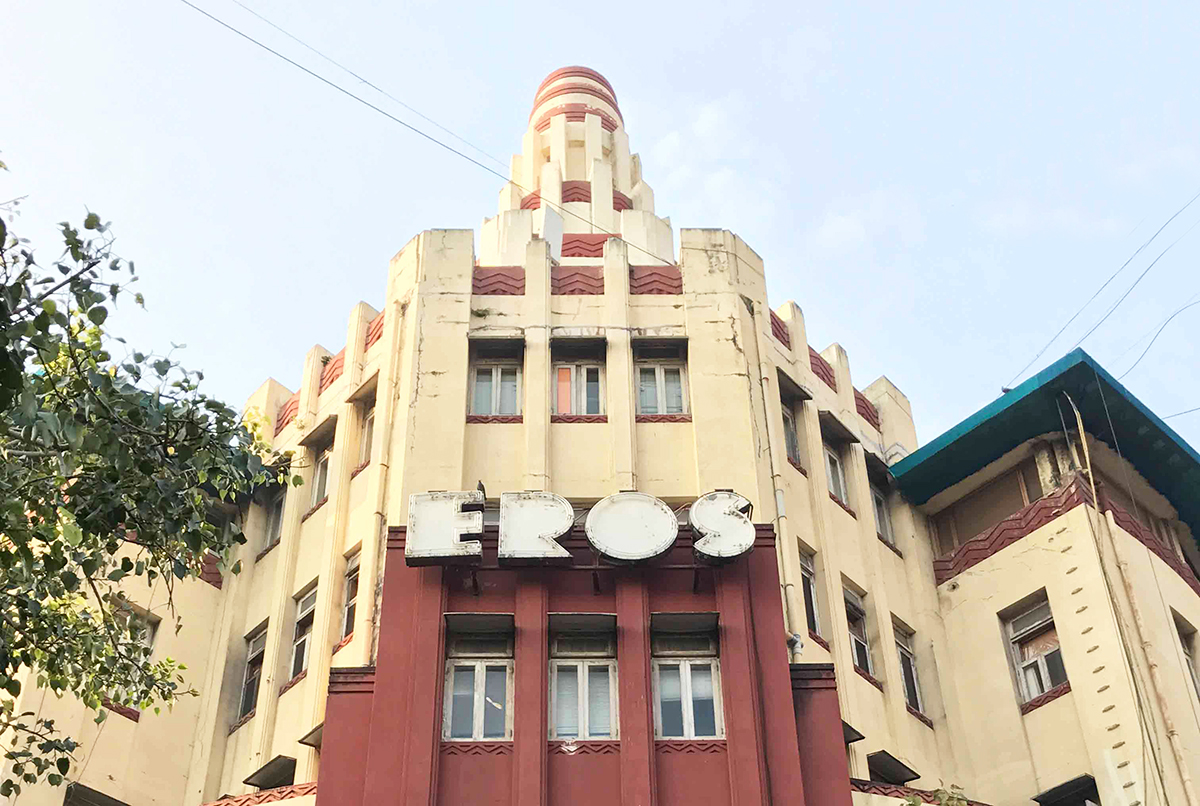
Eros Cinema. Photo Courtesy: Art Deco Mumbai Trust
By now, the press began to track and record their developments and efforts. In mid-2013, Mid-Day, Mumbai’s popular English language publication, kicked off a month-long campaign across print, radio and the web with the aim to mobilise its readers to do their bit. It ran articles to create awareness; interviews with experts who had arrived in the city to review the dossier’s content, including late Augusto Villalon, eminent urban planner and Dr Richard A. Engelhardt, former UNESCO Regional Advisor for Culture in Asia and the Pacific. A signature campaign was floated on Mid-Day’s website, inviting readers to back the campaign. These signatures were added to the all-important dossier for the nomination process that was ready in 2014. Mid-Day’s radio partner drew in its listeners to sign up for this campaign where experts like Lambah explained why this UNESCO tag was important to put Mumbai on the global heritage map.
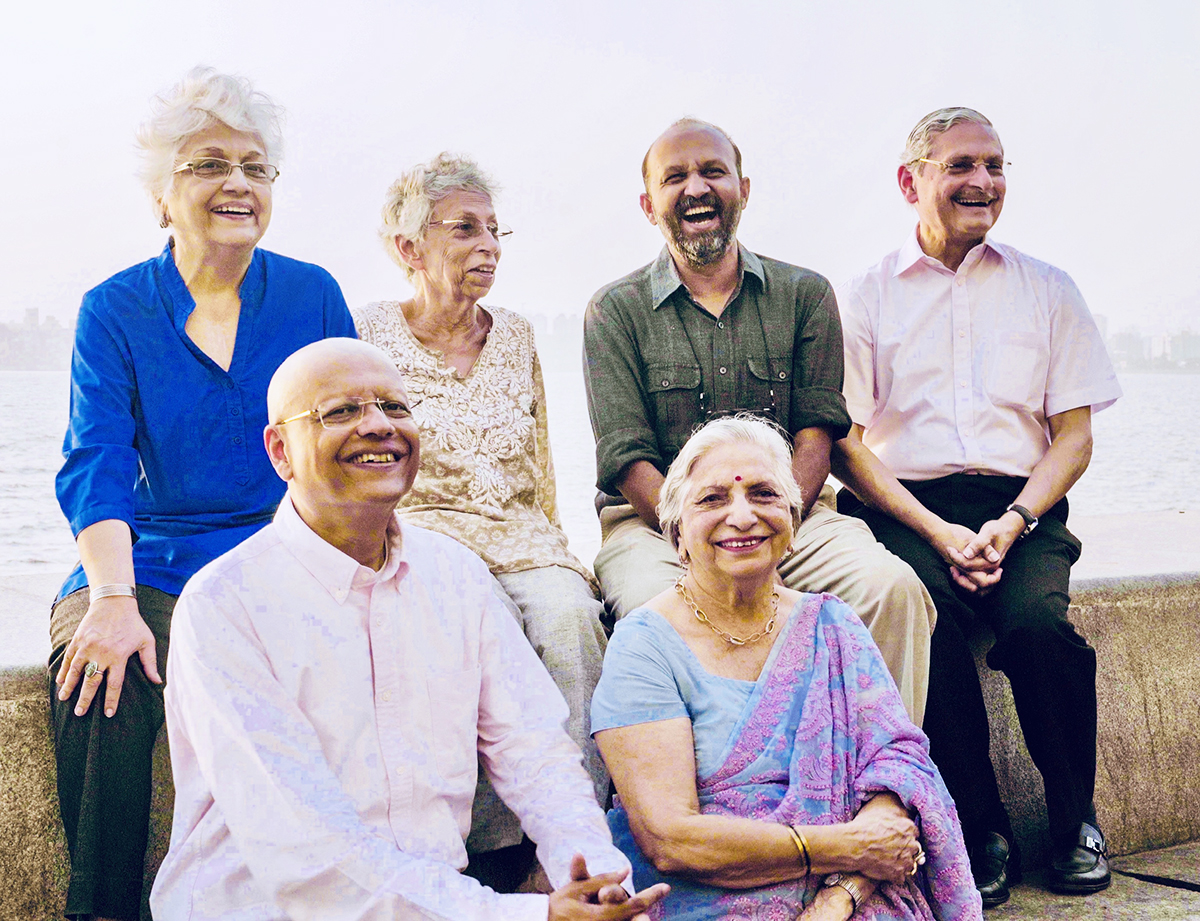
The stakeholders responsible for the nomination campaign.(Clockwise from top left) Nayana Kathpalia (OCRA), Shirin Bharucha (OVAL Trust), Pankaj Joshi (UDRI), Cyrus Guzder (UDRI), Swarn Kohli (NPCCA), Atul Kumar (ADMT) and Abha Narain Lambah (below). Photos Courtesy: FORT (Federation of Residents Trusts)

Finally, a comprehensive document was prepared to factor in all reasons that make it worthy of a World Heritage Site, and it was submitted by the Government of India in the same year. While helming this campaign for Mid-Day, I recall Lambah reveal countless generous gestures made by heritage-lovers — critically acclaimed photographer Jehangir Sorabjee had donated aerial frames of the city from his collection, free of cost, while Dwivedi had offered access to her invaluable repository of archives and images. Several cultural organizations, including The Kala Ghoda Association, had also come forward with donations.
The three-volume nomination dossier and management plan, with over 1,500 pages of historical timelines, maps, drawings and notes was next evaluated by UNESCO’s Advisory Body, International Council on Monuments and Sites (ICOMOS) for built heritage, as well as a physical on-site evaluation in 2017. Post this exhaustive process by ICOMOS; they conveyed their decision on the inscription for UNESCO’s World Heritage Committee.
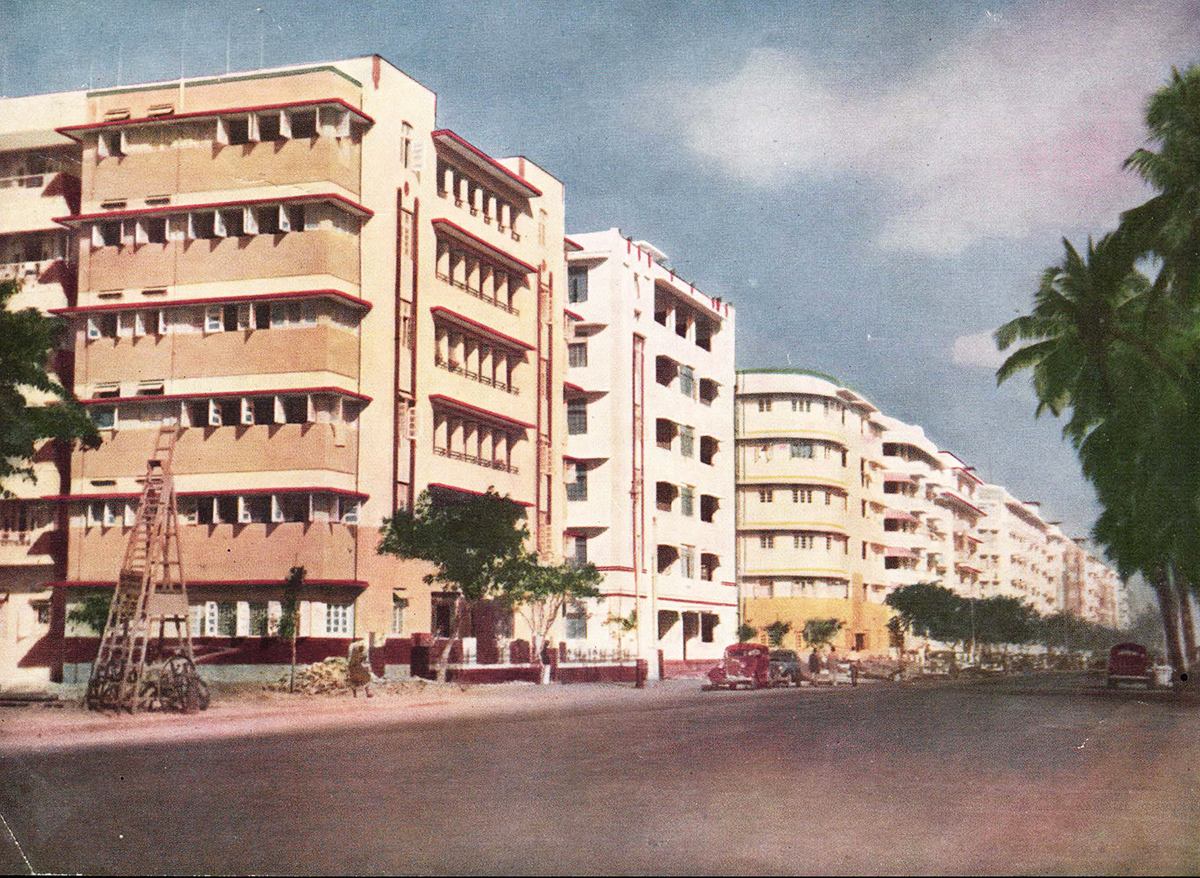
Archival image of buildings at Oval. Photo courtesy: Art Deco Mumbai Trust
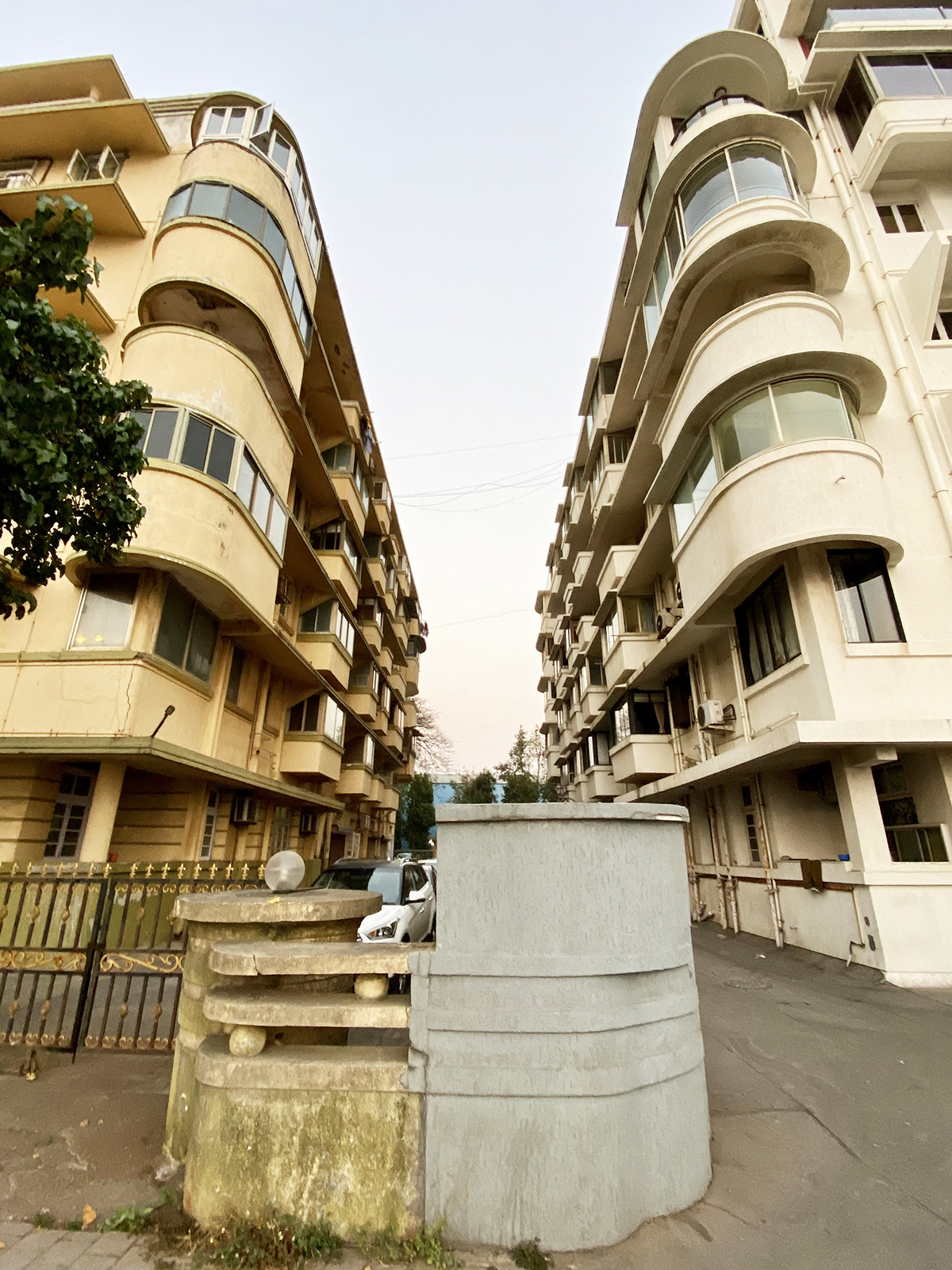
Balconies of Al-Sabah Court and Bharatiya Bhavan, Marine Drive. Photo courtesy: Art Deco Mumbai Trust
Back home, familiar faces supported this cause, including South Mumbai’s rival politicians at the time, Shaina NC and Milind Deora. Bollywood superstar Amitabh Bachchan added stardust to the unique campaign.
In 2018, the site was presented to the World Heritage Committee. Finally, on June 30, 2018, at the 42nd session of UNESCO World Heritage Committee in Manama, Bahrain, the VGAD ensemble won the prestigious UNESCO inscription giving it World Heritage Site status. It was the fifth for the state of Maharashtra, and the first instance in India’s 37 World Heritage Sites (till 2018) where the nomination system was a citizens’ initiative.
As Lambah witnessed history being made for Mumbai in the Middle East, she shared over the phone lines how the campaign came in for special praise since until then nominations for inscriptions were always government-driven ones. This case was an exception, where citizens worked in conjunction with the government, making the victory even more special.
Looking Forward
While the residents toasted this win, this resilient lot is very aware of the challenges that come with it. The health of the ensemble might somewhat be secured on paper but there is the consistent need to ensure that its upkeep in the coming decades is practised following strict heritage norms. This is more critical with the Art Deco buildings since they are living, breathing residences that are susceptible to wear and tear. That these stakeholders who live here, are also its watchdogs, make it a blessing. They have the not-so-envious task of having to maintain and sustain its original aesthetics while simultaneously needing to be one step ahead of the rest when it comes to prevalent heritage laws and guidelines and the city’s Development Plan. Ever since the sweet victory, they’ve initiated awareness programmes to enlighten their fellow residents and the rest of the city to be equally invested in its heritage value. While the pandemic and lockdown might have slowed down some plans, they’ve wasted no time in using the online route.
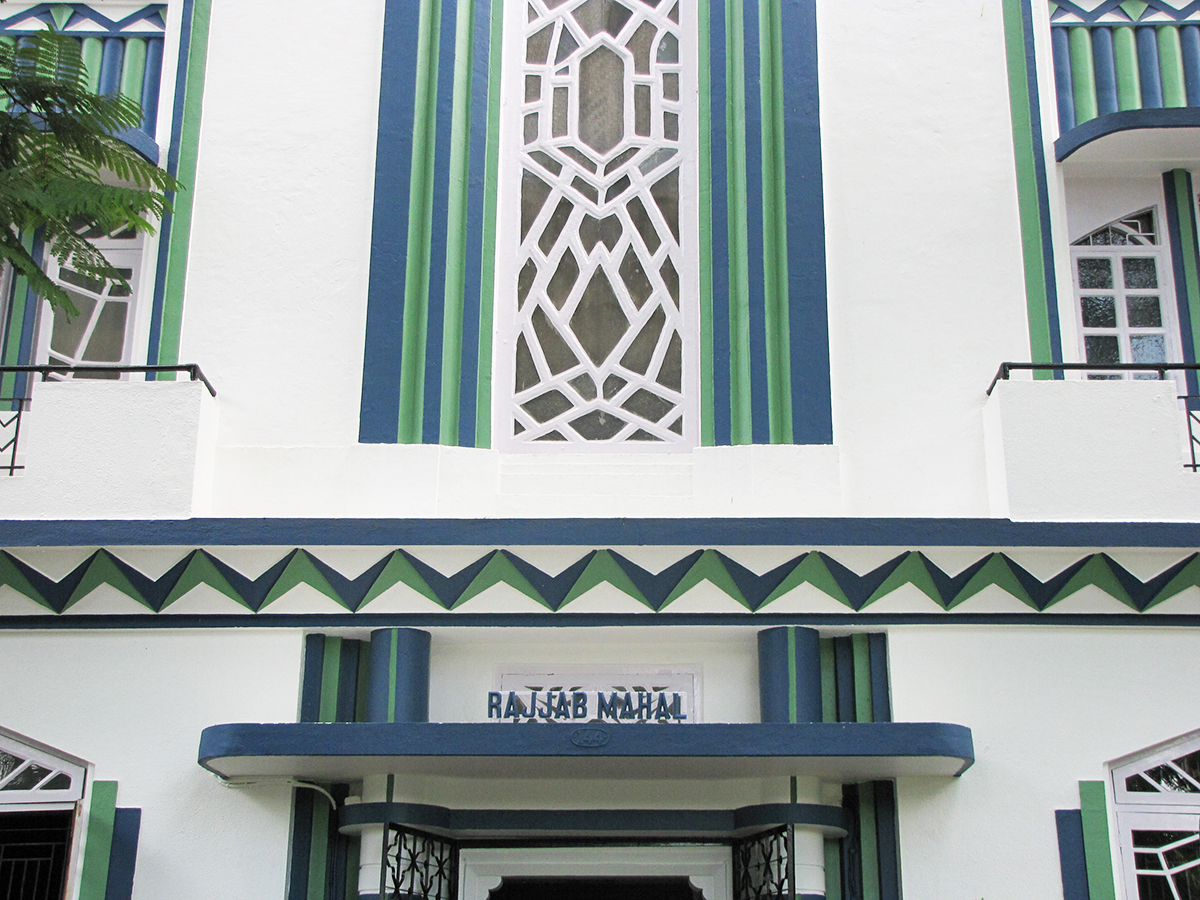
Geometric patterns on Rajjab Mahal, Oval. Photo courtesy: Art Deco Mumbai Trust
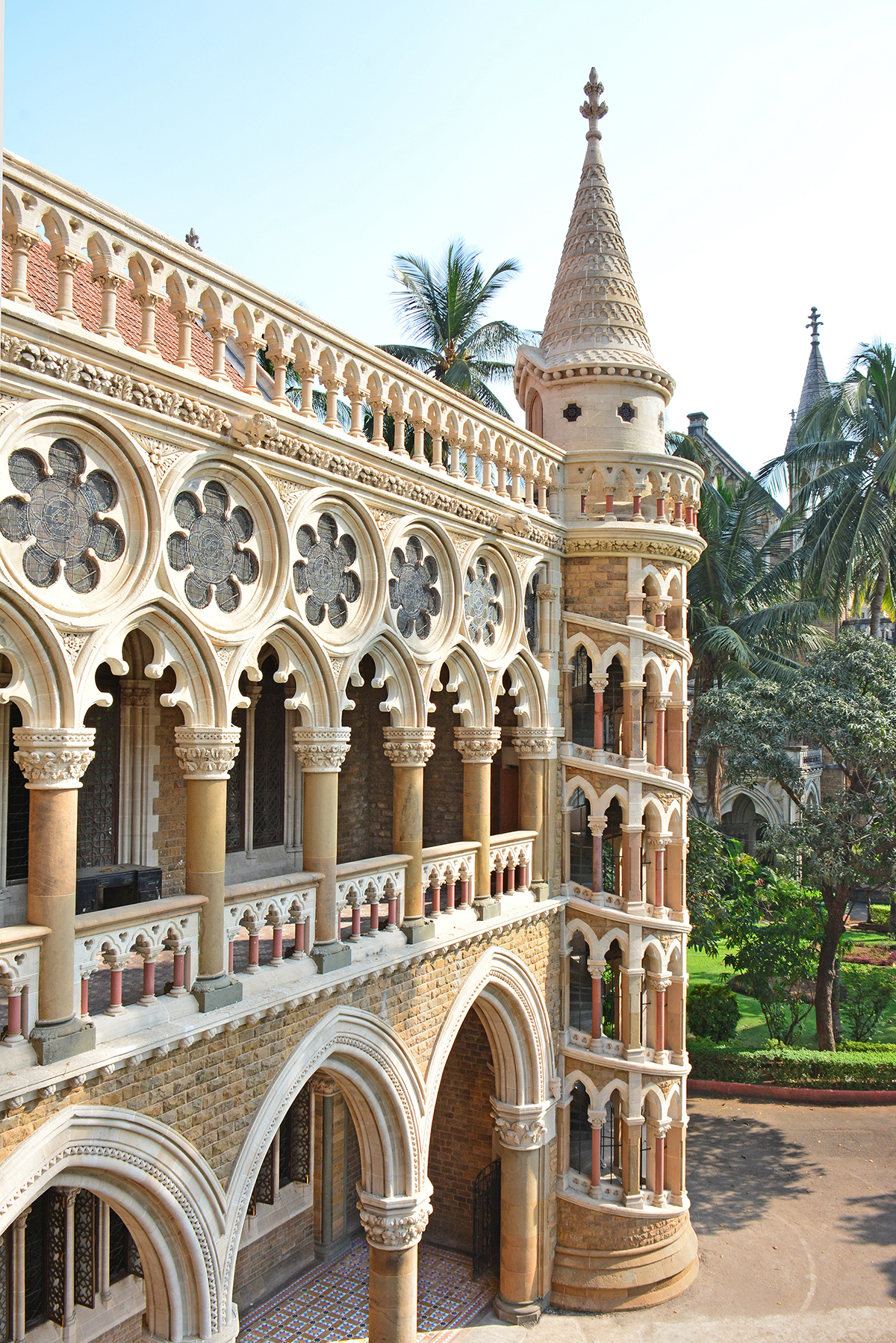
University of Mumbai. Photo courtesy: Noshir Gobhai
For observers like me, who’ve tracked this herculean campaign for over a decade, this movement deserves a standing ovation from Mumbaikars. In fact, watching these warriors continue with steely determination, other citizen groups across the city and its suburbs took a cue from them and adopted similar approaches in their own localities to keep the dialogue about heritage relevant, and more importantly, pave the way to preserve these slices of local history that give Mumbai its unique cosmopolitan fabric.
These spirited, battle-hardened caretakers are Mumbai’s first real ambassadors of its growing heritage community. And the best news is that they remain gung-ho as ever to safeguard their world-famous neighbourhood so that every brick, corner and contour retains its historic legacy for posterity.
Note: Mumbai has been referred to as Bombay in some instances to maintain the continuity in its historic reference. Resources: Art Deco Mumbai Trust, Mid-Day archives
More from The Byword
Comments
*Comments will be moderated




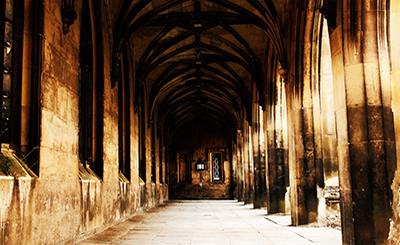
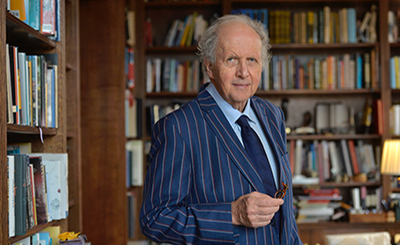
THUMB.jpg)
